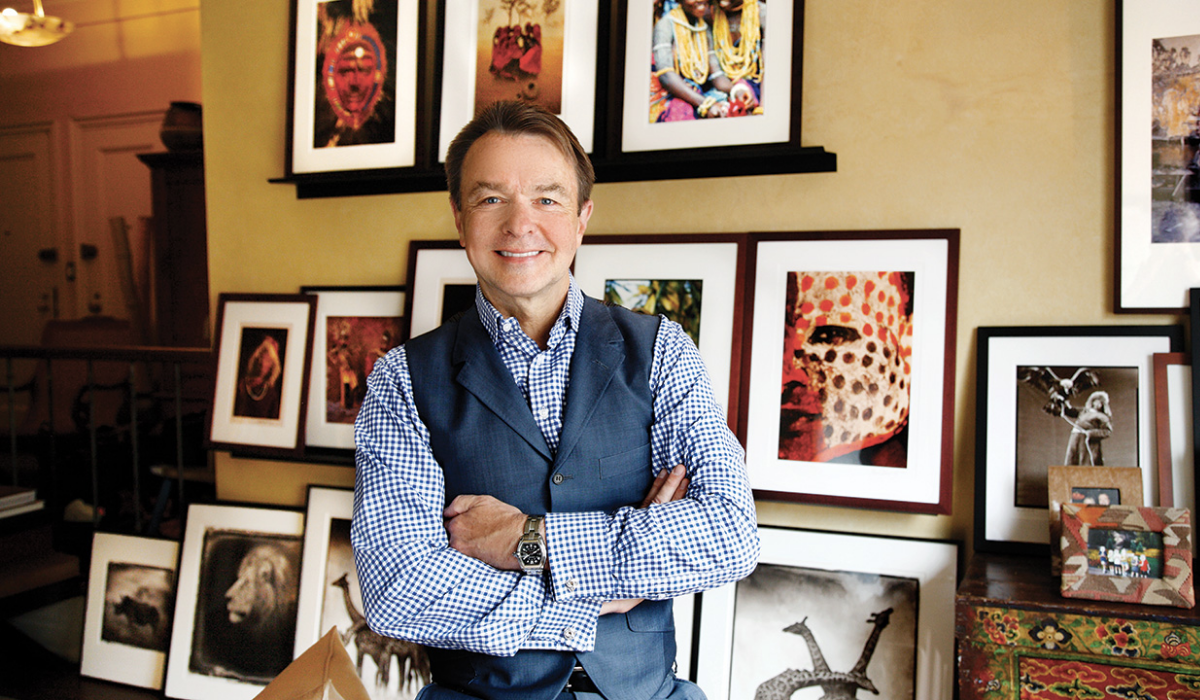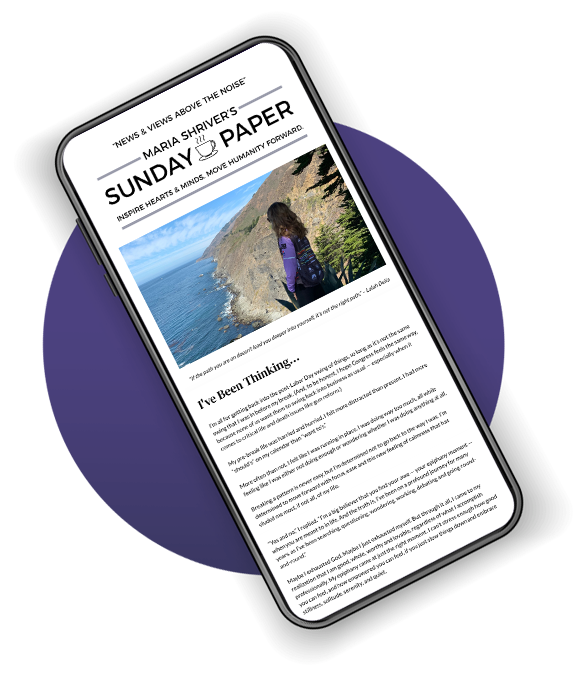Pivoting—at Every Age!—Is Happening at Unforseen Levels. Here’s How to Do It Well

Whether or not we realize it, we’ve all been handed a loose script for our lives. Or maybe not a “script” per se, but a set of societal expectations to follow: Get married by this age. Have children. Build your career. Buy a home. Get to midlife…
But then… what?
The sad thing about these expectations is that they leave us believing that we’re done once we hit a certain age. (And not to mention, these conventional ideas are harrowingly suffocating.) This puts Michael Clinton into a spin. “When people get to midlife, they tend to say, ‘this is now the big wind-down,’” says the author, who challenges the ageist notions. “I say let’s flip it and call it ‘the big-windup.’ What is it that is unfinished in your life that you might want to do?”
Clinton tackles the radical idea that we can be whoever and whatever we want at any age in his new book, ROAR Into the Second Half of Your Life (Before It’s Too Late). He offers readers a roadmap for kicking life into inspirational gear after 50, 60, 70, 80, and beyond. Filled with inspiration, he includes insights from more than 40 people who’ve made giant later-in-life shifts (there’s the woman who became a medical doctor in her fifties…), as well as practical tools for how to chart a new course. “I wanted this book to be both inspirational,” Clinton tells us, “but also to have a lot of practical tools and resources for people to say, ‘how can I do this?’”
We chatted with Clinton about how ROAR is redefining what it means to live a wildly authentic life, and the ways each of us can get started in following our dreams—today.
A Conversation with Michael Clinton
Taking a macro look at your book, there is a general theme to which you write, which is to not wait to do something you love—no matter how old you are. Let’s start there.
We live in a culture that has a lot of inherent ageism, which then creates self-imposed ageism, which then makes us think, I can’t do that because it’s not age-appropriate. Instead, I like to say it should be ‘person appropriate.’ People say, ‘well, I’m getting older.’ I like to say, ‘you’re living longer.’ Words matter because it creates our self-perception of ourselves.
When people get to midlife, they tend to say, ‘this is now the big wind-down.’ I say let’s flip it and call it ‘the big-windup.’ What is it that is unfinished in your life that you might want to do? The reality is if you’re 50 and you’re healthy, you have a good shot of living to be 90. So there is a lot of living to do over the next 40 years. When you put it in that perspective, that can help you to say, ‘I can do that. I can go back to school. I can go and start a new business. I can become an entrepreneur. I can have another relationship.’
You interviewed 4o people who flipped the switch on the conventional plan and made bold decisions and changes for themselves mid-life or later. What do they have in common, and why are their stories important for the people to hear?
Think of the sheer volume of people. Thirty-four percent of the population is 50-plus. In 2030, one in five Americans will be 65-plus. It is astounding because so many of those people who are in that cohort are beginning to say, ‘I don’t want to follow the script that was handed to me by my parents, I want to completely reinvent.’ You’ve got this group of people, many of them who are educated professionals who have accumulated assets, are dynamic, healthy, tech-savvy, active, and they want to create a new script.
I call these people the ‘Reimagineers’ in the book. The 40 people who I interviewed were people who acted on that thought. There is the 53-year-old book editor who decided to become a medical doctor. She went on that journey and is now a medical doctor in her early sixties. For all the people that I interviewed, the thing that they had in common was that they released themselves of the self-imposed ageism for starters. And then they spent a good year or two thinking about what is it that they want to do next. They opened themselves up to the possibilities and made bold decisions at midlife in work and career and lifestyle and love. The first key was that they released themselves from this notion of a midlife self-constriction.
The book is called ROAR, which is both an acronym you created and a verb to “ROAR into the second half of your life.” Walk us through each letter and the action behind it.
ROAR is a great word because it’s an active action word. The acronym that it stands for in the four parts of the book are:
- R is Reimagine yourself before others do it for you. We all know what happens: We get downsized. We lose a job. We lose a spouse. How do you make that a proactive process that is integrated into your life for your whole life? Part of that is thinking about your favorite future. What does it look like? And you can ask yourself that question at any age. So the R is about manifesting your reimagined self.
- The O is for Owning who and where you are right now. That means owning your health and financial numbers, as well as your age (60 should be the new 60). Also, own that we are all going to have a final number. Have you thought about how you want to be remembered by your family and community? What has been your contribution to the world?
- The A is for Acting on what’s next. I hate the word midlife crisis. I love the word midlife awakening because if you’re 45 or 50, you’ve now lived 25 years as an adult and you know what you’re good at. You know what you like, what you don’t like so why not go act on that and activate your midlife awakening? Say, ‘here’s where I can go next.’ My own approach is through something I call ‘life layering.’ It is how you build on your own personal dreams and identities.
- The final R is for Reassessing your relationships. When someone is 50 and they say, ‘I want to go back to school and create a whole second career, you can have a lot of naysayers in your life. Your partner might say, ‘that’s inconvenient for me.’ Your friends might say, ‘why do you want to start a whole new career at 50?’ So the people around you can be a drag on your aspirations so you must surround yourself with people who say, ‘Hey, I think that’s great that you’re going back to school, go for it!’ So surround yourself with that support system.
Let’s go back to the first R. You write at the beginning of the book that ‘if you’re unhappy, you have no choice but to change.’ But in truth, change can be very scary. For the person who is overwhelmed at the idea of making a change and ‘Reimagining’ themselves, where can they start?
It’s a great question and it’s probably one of the most relevant. I like to say: Go back to your younger self. What did you leave on the shelf? You left something on the shelf when you were in your early twenties, what was it? Was it a passion for a creative course that you wanted to take? We all know the person who wanted to be an anthropologist and they were talked into becoming an accountant. We all know the person who wanted to be a writer and they were talked out of being one because it wasn’t going to be a meaningful or lucrative career path. Think about what it was that you left on the shelf, go back and reclaim it. Find a way to use that as your starting post.
In the book, I include a story of a woman who was a sales executive her entire life. She had this desire to be a writer, a novelist. Finally, in her fifties, she said, ‘I’m going to do it.’ And she reclaimed it. She started taking writing courses and seminars. She did a masterclass. And she wrote a novel. She had 170 rejections for her book, but she kept at it and she wrote a separate novel, which then she sold to a publisher. She’s now 66 and she has published five novels. And she became the person she wanted to become. Getting back to the fourth R, she had to surround herself with a lot of support from her husband and her kids. To me, that is one of the lessons I learned in talking to these people: Go back to their younger self and reclaim something.
At the risk of this being a leading question, this book could speak to my 15-year-old niece as much as it could to my 78-year-old stepfather. Who do you hope reads this book?
It’s funny that you asked me that question because the book was targeted to the 45- to 65-year-old. But since the book has come out, I’ve been hearing from these 30-somethings and 20-somethings who are saying ‘wow, this is a book of wisdom, and it’s like a life-planning tool.’ So that was unexpected and a delight to hear from younger adults who said that this was inspirational for them. Also, it is for those people who are in their seventies who are healthy and realizing that they have another 20 years to live and want to be thinking about having more meaning, satisfaction, and fulfillment in their lives. They’re saying, ‘this is making me think I’ve got another run in me…’ So yes, this book sort of spilled out into lots of other places I didn’t expect.
You can learn more about Michael Clinton here and order your copy of ROAR here.


